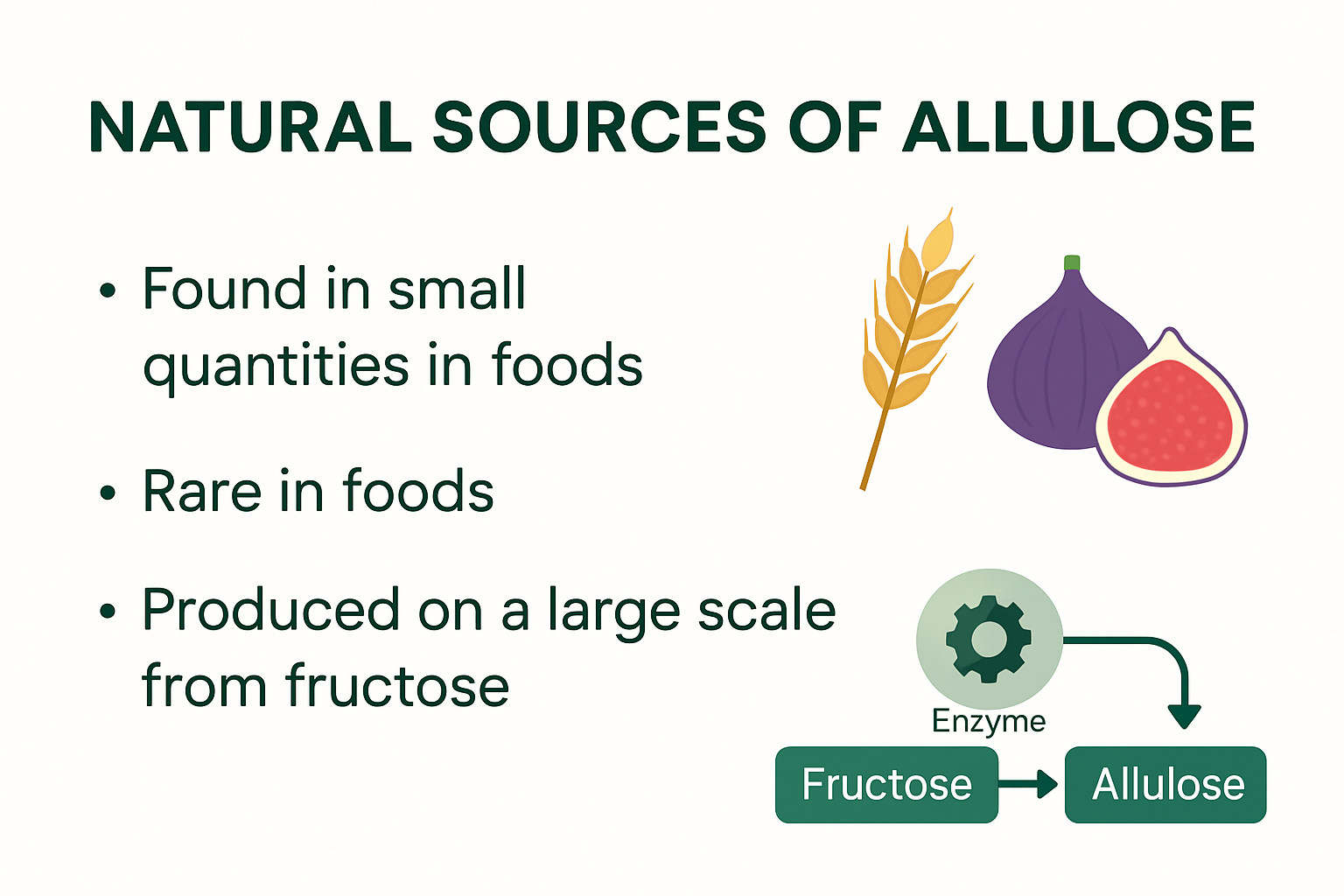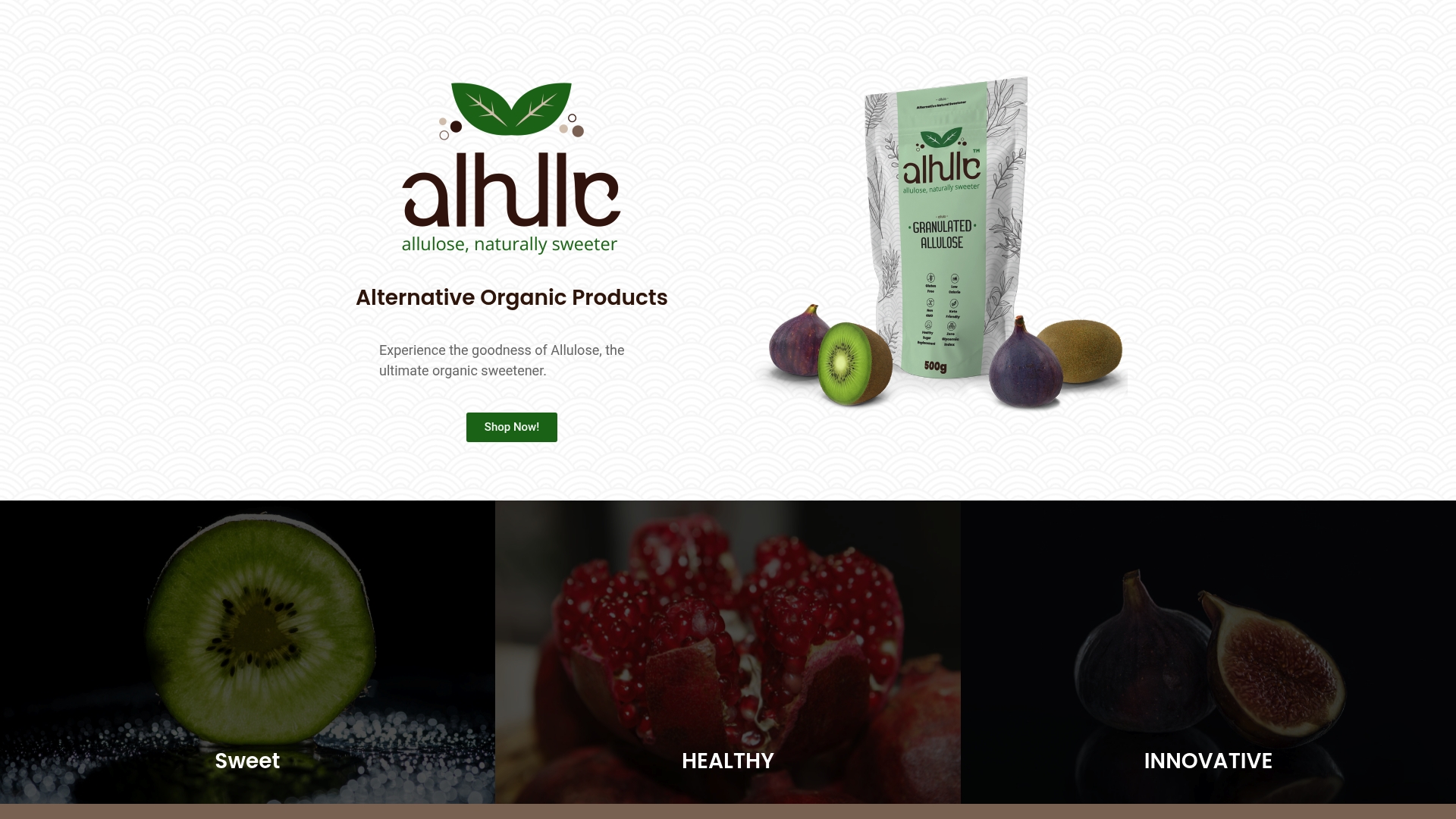
South Africans looking for smarter sugar alternatives are starting to hear a lot about allulose. Now this sweetener claims to offer just about everything – taste, versatility, even health perks. Here’s the kicker. Up to 90 percent of allulose leaves your body without being digested at all, so you get almost no calories and minimal blood sugar impact. Turns out, how it’s made is even more fascinating than its taste, and the process behind this rare sugar might surprise you.
Table of Contents
- Understanding Allulose And Its Natural Sources
- The Natural Origins Of Allulose
- Advanced Production Techniques
- The Step-By-Step Process: How Is Allulose Made
- Enzymatic Conversion Techniques
- Purification And Crystallization
- Is Allulose Safe? Purity, Health Benefits, And Suitability
- Regulatory Approval And Safety Standards
- Metabolic And Health Implications
- Allulose Vs Other Sweeteners: Choosing The Best Fit For Your Lifestyle
- Comparative Analysis Of Sweetener Characteristics
- Health And Lifestyle Considerations
Quick Summary
| Takeaway | Explanation |
|---|---|
| Allulose is a natural, low-calorie sugar alternative | Allulose, also known as D-psicose, is found in trace amounts in foods like wheat, figs, and molasses, but is primarily produced through economical enzymatic conversion from fructose from corn or sugar beet. |
| It is recognized as safe for consumption | The U.S. FDA has granted allulose Generally Recognized as Safe (GRAS) status, allowing consumption up to 0.4 grams per kilogram of body weight per meal, though higher intake may cause mild gastrointestinal discomfort. |
| Allulose has unique metabolic properties | Approximately 90% of allulose is excreted unchanged, resulting in negligible calories and minimal impact on blood glucose and insulin levels, making it suitable for those managing their weight or blood sugar. |
| Allulose performs well compared to other sweeteners | It has around 70% of the sweetness of sucrose, lacks the aftertaste associated with some alternatives, and maintains stability during cooking, making it a versatile ingredient in various recipes. |
| It may offer health benefits | Emerging research suggests allulose could aid in weight management by potentially reducing body fat without significantly altering overall energy intake, appealing to health-conscious consumers. |
Understanding Allulose and Its Natural Sources
Allulose represents a fascinating natural sugar alternative that is revolutionizing how we think about sweetness. This rare sugar, scientifically known as D-psicose, occurs naturally in minute quantities across several food sources. Explore our comprehensive guide on allulose’s nutritional profile.
The Natural Origins of Allulose
Naturally occurring allulose can be found in trace amounts within specific foods. According to research from McGill University, this unique sugar appears in small quantities in wheat, figs, raisins, maple syrup, and molasses. These natural sources provide insights into allulose’s molecular structure and potential health benefits.
However, extracting allulose directly from these sources presents significant challenges. Food science research from European Food Times reveals that commercial production relies on enzymatic conversion techniques. Specifically, manufacturers typically derive allulose by transforming fructose obtained from corn or sugar beet, which proves far more economically viable than direct extraction.
Advanced Production Techniques
Modern biotechnology has dramatically expanded allulose production capabilities. Scientific research published in ScienceDirect highlights groundbreaking advancements in biosynthesis. Researchers have successfully developed methods to produce D-allulose from non-food biomass like corn stover through sophisticated enzymatic processes.
These innovative techniques represent a significant leap forward in sustainable sweetener production. By converting agricultural waste products into a valuable sugar alternative, scientists are creating more environmentally friendly and cost-effective manufacturing methods. The process involves precise enzymatic transformations that modify fructose molecules, creating allulose with remarkable metabolic properties.
What makes allulose particularly intriguing is its unique metabolic profile. Unlike traditional sugars, allulose is not fully metabolized by the human body. Research indicates that approximately 90% of consumed allulose is excreted unchanged, resulting in negligible caloric impact. This characteristic makes it an exciting option for individuals managing blood sugar levels or seeking low-calorie sweetening alternatives.
The journey from natural trace amounts to commercially viable production showcases human innovation in nutritional science. By understanding and replicating nature’s molecular structures, researchers have transformed a rare sugar into a potentially game-changing sweetener that offers both health benefits and culinary versatility.

The Step-by-Step Process: How Is Allulose Made
Producing allulose involves sophisticated biotechnological processes that transform ordinary sugars into this unique low-calorie sweetener. Learn more about allulose’s metabolic properties to understand its remarkable production journey.
Enzymatic Conversion Techniques
The primary method of allulose production centers on enzymatic conversion. According to research from the University of California Davis, scientists have developed groundbreaking techniques to convert glucose into allulose through specialized fermentation processes. These methods can achieve impressive yields of over 60% with purity exceeding 95%.
The core of this process involves using a specific enzyme called D-allulose 3-epimerase. This enzyme catalyzes the molecular transformation of fructose, enabling the precise structural changes required to create allulose. Detailed scientific research published in ACS Catalysis reveals an innovative in vitro enzymatic biosystem that can produce allulose from starch through a complex phosphorylation-dephosphorylation cascade, achieving an extraordinary 88.2% yield from just 10 g/L of starch.
Purification and Crystallization
After the initial enzymatic conversion, the allulose undergoes rigorous purification processes. According to the Food Chemical Codex, this involves several critical steps: chromatographic separation, decolorizing, desalting, concentration, and ultimately, crystallization and drying to obtain the final crystalline powder.

The purification stage is crucial in ensuring the allulose meets strict food-grade standards. Manufacturers employ advanced techniques to remove any residual enzymes, impurities, or byproducts from the initial conversion process. This meticulous approach guarantees a pure, safe, and high-quality sugar alternative that meets the most stringent health and safety regulations.
The complexity of allulose production highlights the remarkable intersection of biotechnology, food science, and nutritional innovation. By leveraging sophisticated enzymatic processes, researchers have transformed a rare sugar into a viable, health-conscious sweetening solution. The multi-step production method not only ensures the unique metabolic properties of allulose but also demonstrates the incredible potential of modern scientific approaches to creating smarter, healthier food ingredients.
From agricultural waste to sophisticated sugar alternative, the journey of allulose represents a testament to human ingenuity in addressing nutritional challenges. Each step of the production process is carefully designed to maximize yield, maintain purity, and deliver a sweetener that offers a promising alternative to traditional sugars.
Here’s a step-by-step summary table outlining the key stages of the commercial allulose production process described above:
| Step | Description |
|---|---|
| 1. Raw Material Preparation | Obtain fructose (typically from corn, sugar beet, or agricultural biomass like corn stover) |
| 2. Enzymatic Conversion | Use D-allulose 3-epimerase to convert fructose into allulose via structural transformation |
| 3. Chromatographic Separation | Separate allulose from other sugars and byproducts |
| 4. Decolorizing & Desalting | Remove unwanted colour compounds and salts |
| 5. Concentration | Concentrate the purified allulose solution |
| 6. Crystallization & Drying | Crystallize and dry to obtain pure, food-grade allulose powder |
Is Allulose Safe? Purity, Health Benefits, and Suitability
Allulose stands out as a promising sugar alternative that has captured the attention of health-conscious consumers seeking safer sweetening options. Discover the comprehensive safety profile of allulose.
Regulatory Approval and Safety Standards
The U.S. Food and Drug Administration has taken a definitive stance on allulose, granting it Generally Recognized as Safe (GRAS) status. Research published in the National Institutes of Health database indicates that individuals can safely consume allulose in doses up to 0.4 grams per kilogram of body weight per meal. However, consumers should be aware that higher intake levels might result in mild gastrointestinal discomfort.
Metabolic and Health Implications
One of allulose’s most remarkable characteristics is its unique metabolic profile. Scientific research from MDPI reveals that allulose is absorbed and subsequently excreted without being metabolized, resulting in minimal caloric contribution. This property makes it particularly interesting for individuals managing blood glucose levels, as it demonstrates negligible impact on blood glucose and insulin responses.
Beyond its metabolic neutrality, emerging research suggests potential additional health benefits. Nutritional studies published in medical journals indicate that allulose may play a role in weight management. Preliminary findings suggest it could help reduce body fat percentage without significantly altering overall energy intake, though researchers emphasize the need for more extensive human studies to conclusively validate these observations.
The safety and versatility of allulose extend beyond its metabolic properties. Its ability to provide sweetness without the metabolic consequences of traditional sugars positions it as an exceptional alternative for South Africans managing dietary restrictions, particularly those concerned with diabetes, obesity, or metabolic health.
While the scientific community continues to explore allulose’s potential, current evidence strongly supports its safety and efficacy. Its unique molecular structure allows individuals to enjoy sweet flavors without compromising nutritional goals. As with any dietary component, moderation and individual health considerations remain key to optimal integration into one’s diet.
For South Africans seeking a smart, health-conscious sweetening solution, allulose represents a promising frontier in nutritional innovation. Its combination of safety, minimal caloric impact, and potential metabolic benefits makes it an exciting option for those committed to mindful eating and overall wellness.
Allulose vs Other Sweeteners: Choosing the Best Fit for Your Lifestyle
Navigating the world of sugar alternatives can be complex, with numerous options available for health-conscious consumers. Explore our comprehensive guide to understanding sweetener choices to make an informed decision that aligns with your dietary goals.
Comparative Analysis of Sweetener Characteristics
Allulose distinguishes itself from other sweeteners through its unique metabolic profile. Unlike traditional sugar substitutes, research published in sensory evaluation studies demonstrates that allulose performs remarkably well in consumer liking and purchase intent, outperforming alternatives like stevia and sucralose. With approximately 70% of the sweetness of sucrose and minimal caloric content, it offers a compelling alternative for those seeking a more natural sweetening solution.
Compared to artificial sweeteners, allulose presents several distinctive advantages. Stevia, while natural, often has a distinct aftertaste that many find unpleasant. Sucralose and aspartame, synthetic alternatives, have been subject to ongoing health debates. In contrast, scientific research from the National Institutes of Health highlights allulose’s unique metabolic characteristic of being rapidly eliminated through urinary excretion, reducing potential long-term accumulation concerns associated with other sweeteners.
To help you compare allulose with other common sweeteners, here is a table that summarises key characteristics highlighted in this section:
| Sweetener | Sweetness (% of Sugars) | Calories per Gram | Aftertaste | Heat Stability | Main Metabolic Trait | Safety Status |
|---|---|---|---|---|---|---|
| Allulose | ~70% (to sucrose) | ~0.2 kcal | No significant | Stable | 90% excreted unchanged, minimal impact on glucose | GRAS (USA), Allowed |
| Sucrose | 100% | 4 kcal | None | Stable | Fully metabolised, spikes glucose | Approved |
| Stevia | ~200-300% | 0 kcal | Noticeable | Stable | Not metabolised, 0 impact on glucose | Approved |
| Sucralose | ~600% | 0 kcal | Sometimes | Stable | Not metabolised, excreted mostly unchanged | Approved |
| Erythritol | ~60-70% | 0.2 kcal | Cooling effect | Stable | Mostly excreted, minimal blood sugar impact | Approved |
Health and Lifestyle Considerations
For individuals managing specific health conditions, allulose offers notable benefits. Clinical studies suggest potential advantages in weight management, with research indicating its ability to reduce body fat percentage without significantly altering overall energy intake. This makes it particularly attractive for those following ketogenic, low-carb, or weight-loss-oriented diets.
The versatility of allulose extends beyond its metabolic properties. Unlike many sugar alternatives that become unstable at high temperatures, allulose maintains its structural integrity during cooking and baking. This characteristic makes it an exceptional choice for South Africans who love experimenting in the kitchen, from creating traditional milk tart to developing innovative low-sugar desserts.
Each sweetener comes with its own set of pros and cons. Monk fruit extract offers zero calories but can be expensive. Erythritol provides similar benefits to allulose but may cause digestive discomfort in larger quantities. Xylitol, while popular, carries potential risks for pets and can cause digestive issues. Allulose emerges as a balanced alternative that addresses many of these concerns.
Ultimately, the choice of sweetener is a personal decision influenced by individual health goals, taste preferences, and lifestyle requirements. For South Africans seeking a natural, low-calorie sweetening option that doesn’t compromise on taste or cooking performance, allulose presents an exciting and promising alternative to traditional sugars and artificial sweeteners.
As nutritional science continues to evolve, allulose represents a forward-thinking approach to sweetening that prioritizes both health and enjoyment. Whether you’re managing blood sugar, watching your weight, or simply seeking a more natural sugar alternative, allulose offers a compelling solution that aligns with modern dietary needs.
Frequently Asked Questions
What is allulose and how is it different from regular sugar?
Allulose is a low-calorie sugar alternative that occurs naturally in small amounts in foods like wheat and figs. Unlike regular sugar, allulose is not fully metabolized by the body, resulting in minimal caloric impact and lower blood sugar response.
How is allulose produced?
Allulose is primarily produced through enzymatic conversion, where fructose from corn or sugar beet is transformed into allulose using specific enzymes. This process allows for economical large-scale production.
Is allulose safe for consumption?
Yes, allulose is recognized as safe for consumption by the U.S. FDA, with a Generally Recognized as Safe (GRAS) status. It can be consumed in doses up to 0.4 grams per kilogram of body weight per meal, though some individuals may experience mild gastrointestinal discomfort at higher levels.
What are the health benefits of using allulose?
Allulose not only offers sweetness with minimal calories but may also help in weight management by potentially reducing body fat without significantly altering overall energy intake. It is suitable for individuals managing blood sugar levels, making it a popular choice for health-conscious consumers.
Discover Pure Allulose for a Healthier Sweet Life in South Africa
You have just learned how allulose is made and why it is becoming the safe sugar alternative for health-conscious South Africans. If you are tired of worrying about hidden sugars and unpredictable blood sugar spikes in your everyday meals, you are not alone. Many readers want a trustworthy alternative that is low in calories, backed by science, and fits easily into keto, diabetic, and low-carb diets. The article explained the careful enzymatic processes and purity standards behind allulose, but finding authentic, food-grade options can be challenging.
Explore our range of organic allulose sweeteners that deliver on safety, versatility, and taste. Every product is locally available and designed with your health and convenience in mind.

Your journey to better sweetening starts now. Visit Allulo.co.za to shop our products, learn more about allulose, and access recipes and tips that support your nutrition goals. Act today and join the growing number of South Africans choosing smarter, safer sweetness for every meal.
Recommended
- Is Allulose Safe? The Truth for Health-Conscious South Africans (2025) - Allulo
- Allulose Calorie Content Guide 2025: Healthy Sugar Alternative - Allulo
- What Foods Contain Allulose? Guide for Health-Conscious South Africans 2025 - Allulo
- Allulose Glycemic Index: Guide for Healthy Sugar Swaps 2025 - Allulo
- Can You Cook With Allulose? Safe Sweetening for 2025 - Allulo
- Allulose for Low-Carb Diets: A Smart Sugar Alternative 2025 - Allulo


